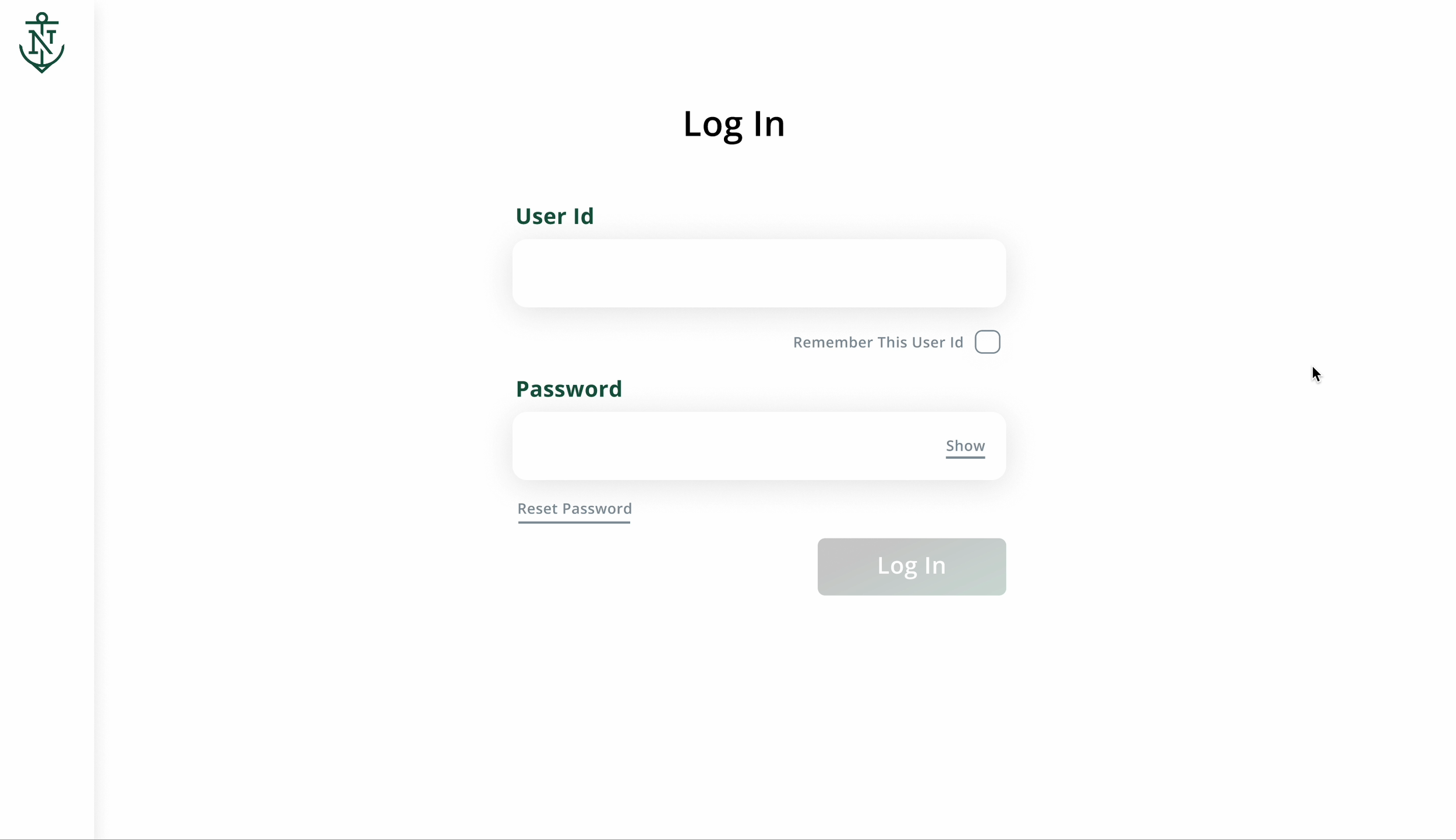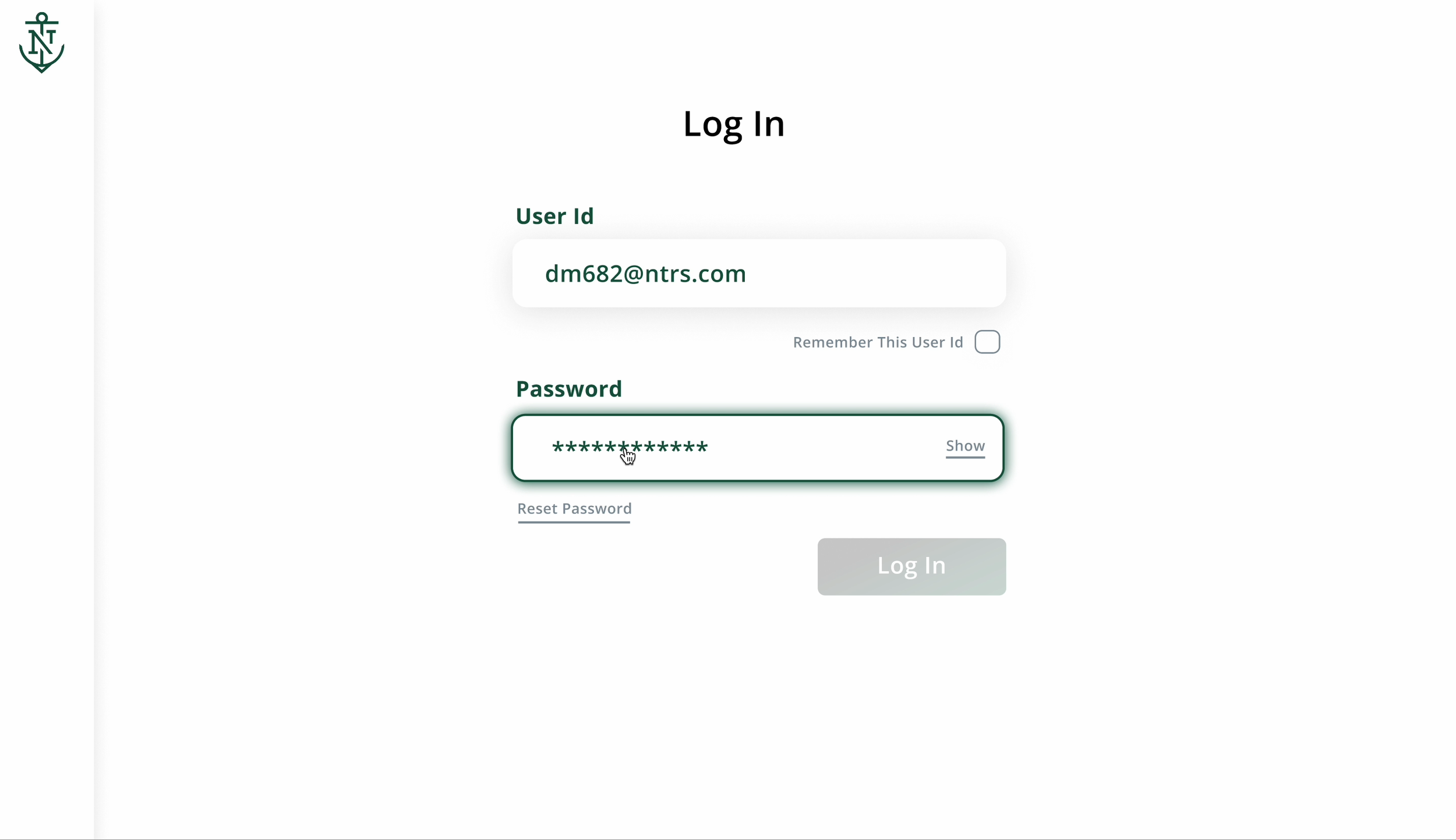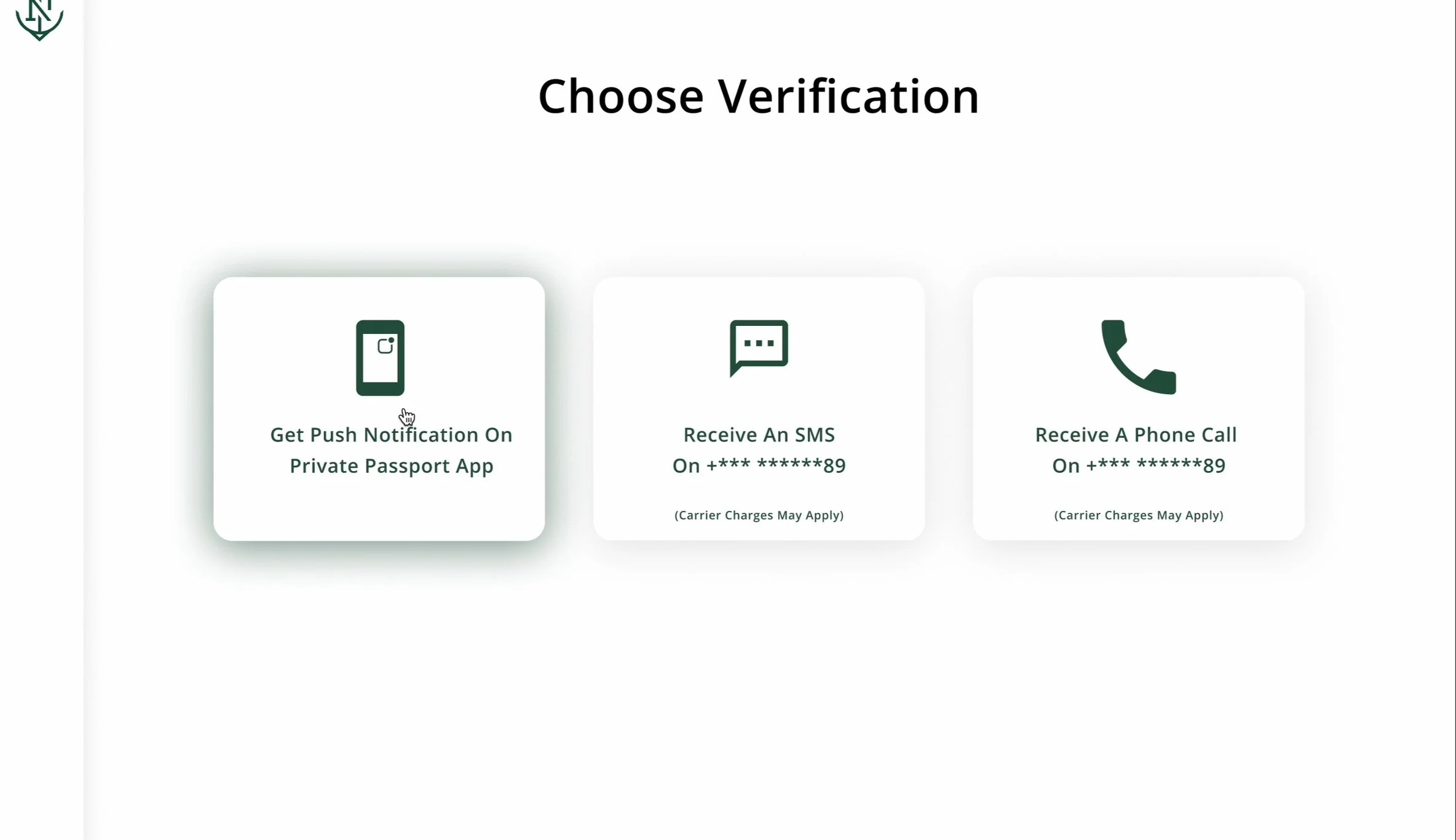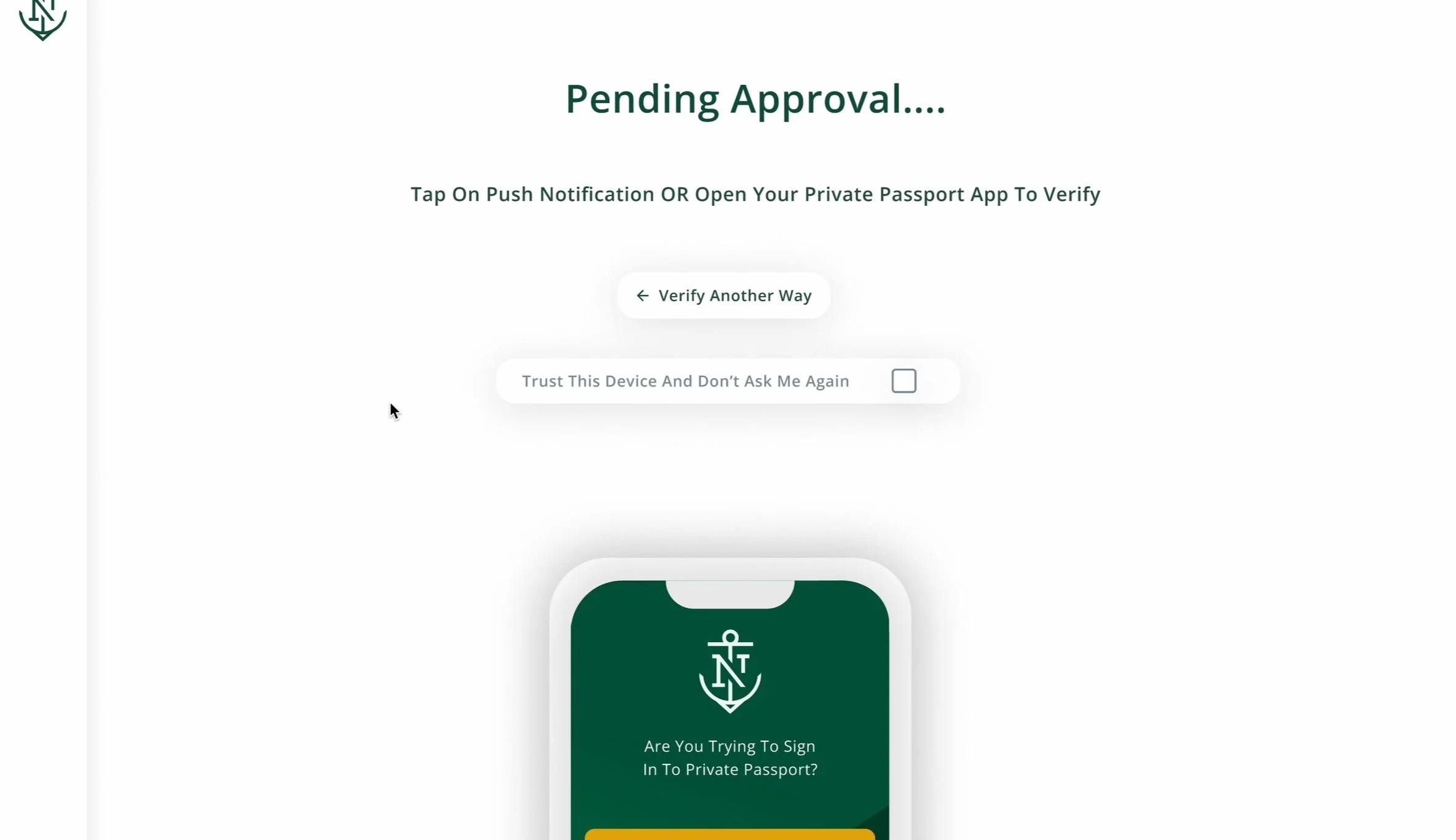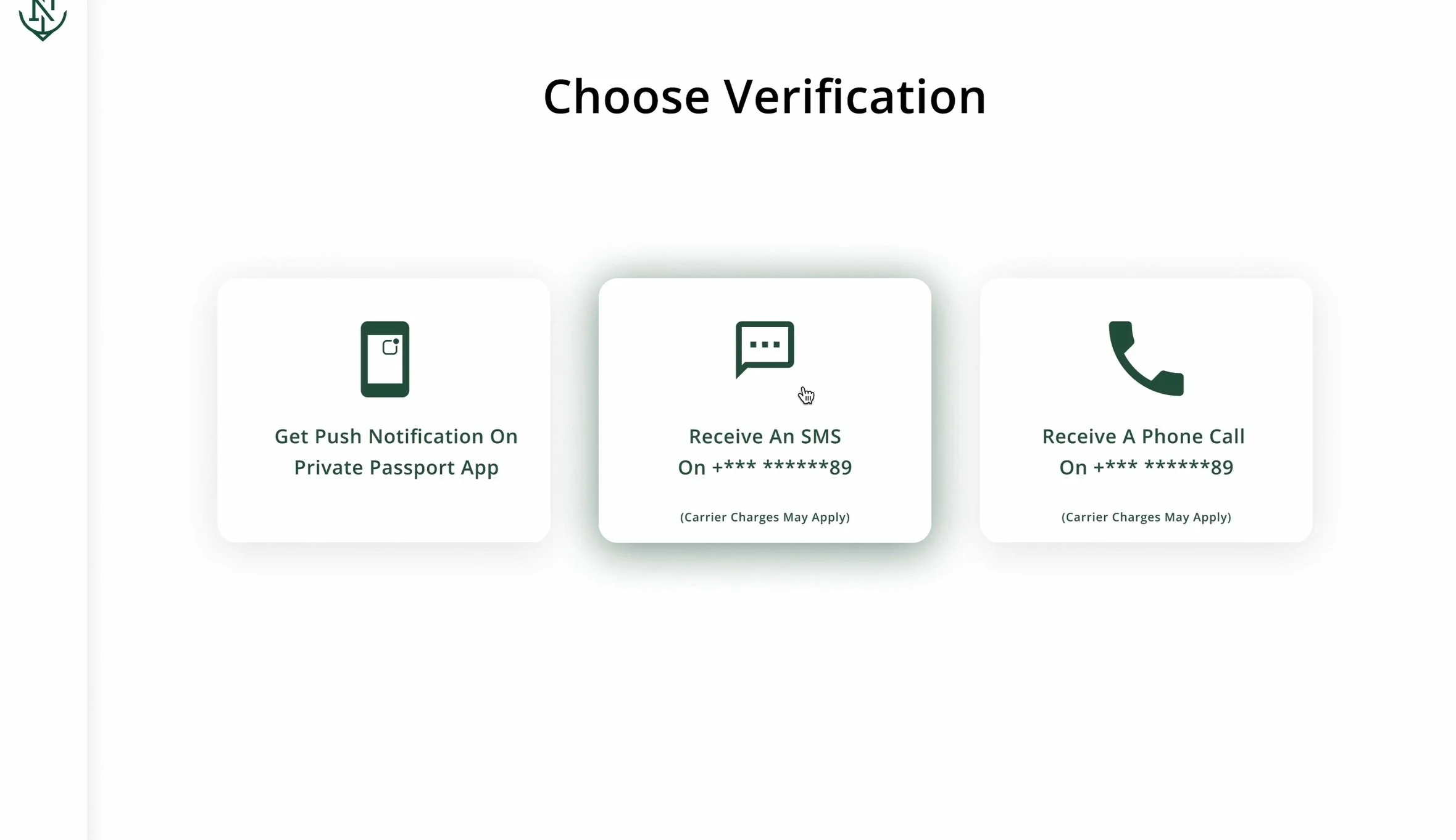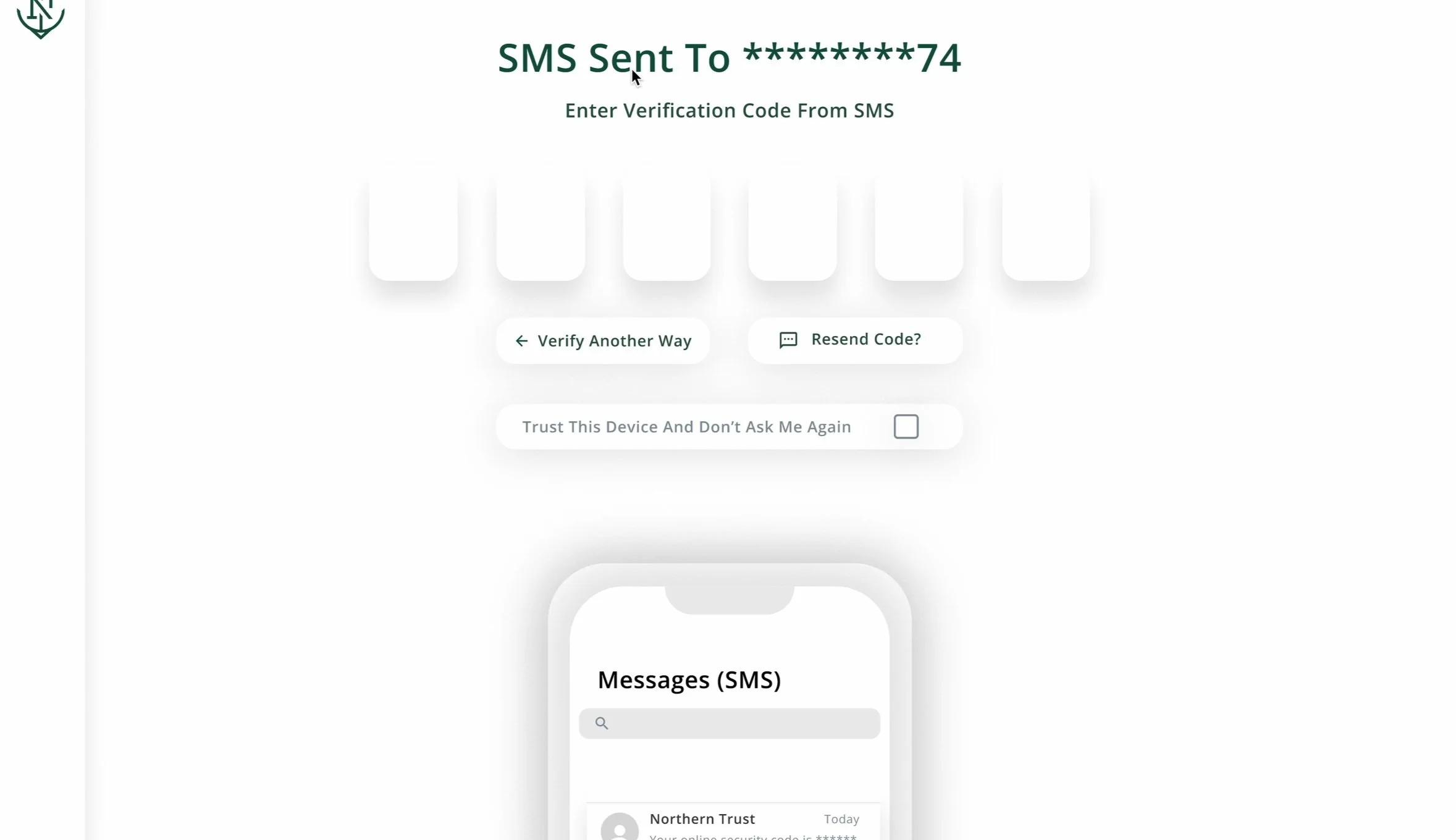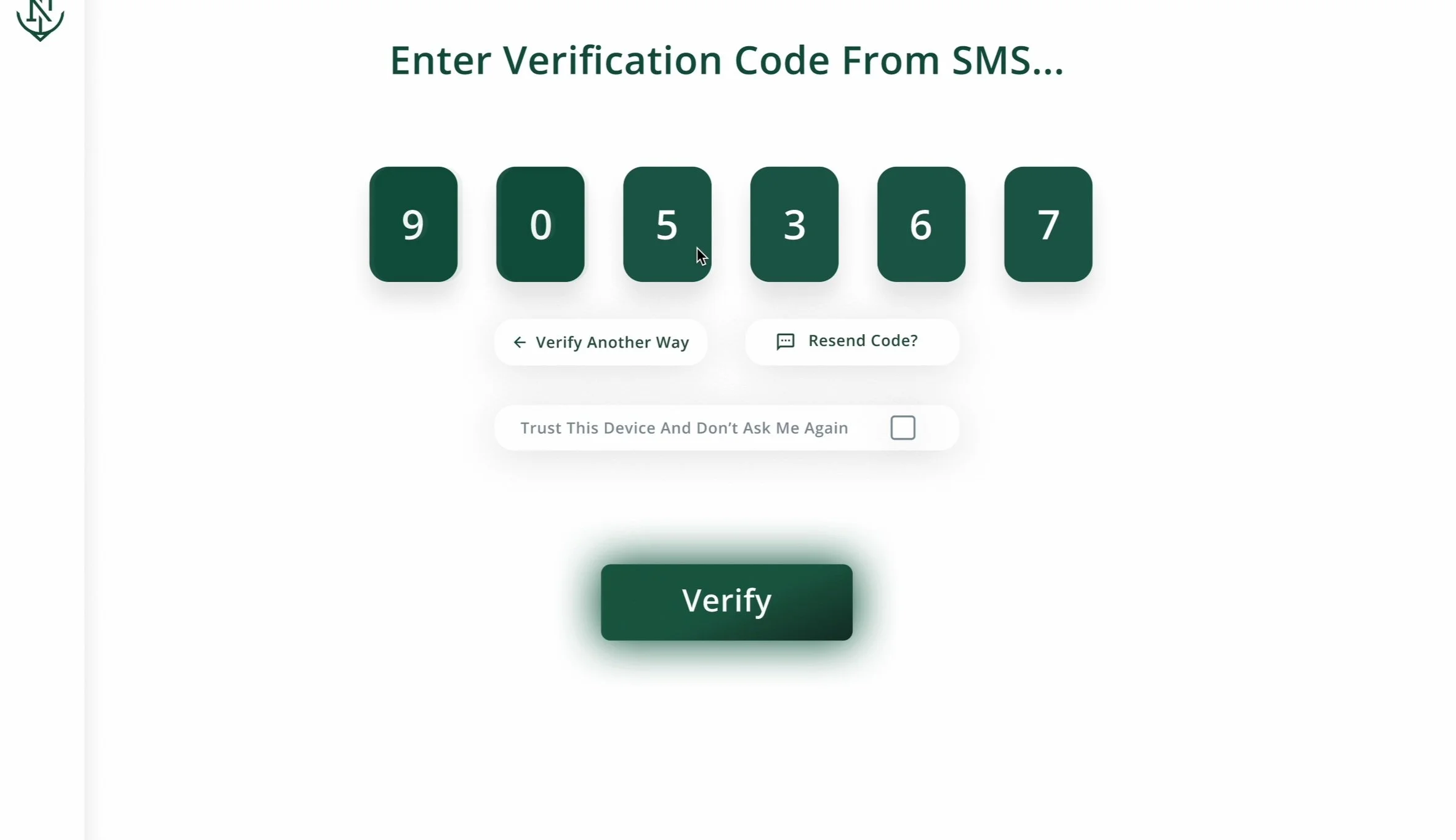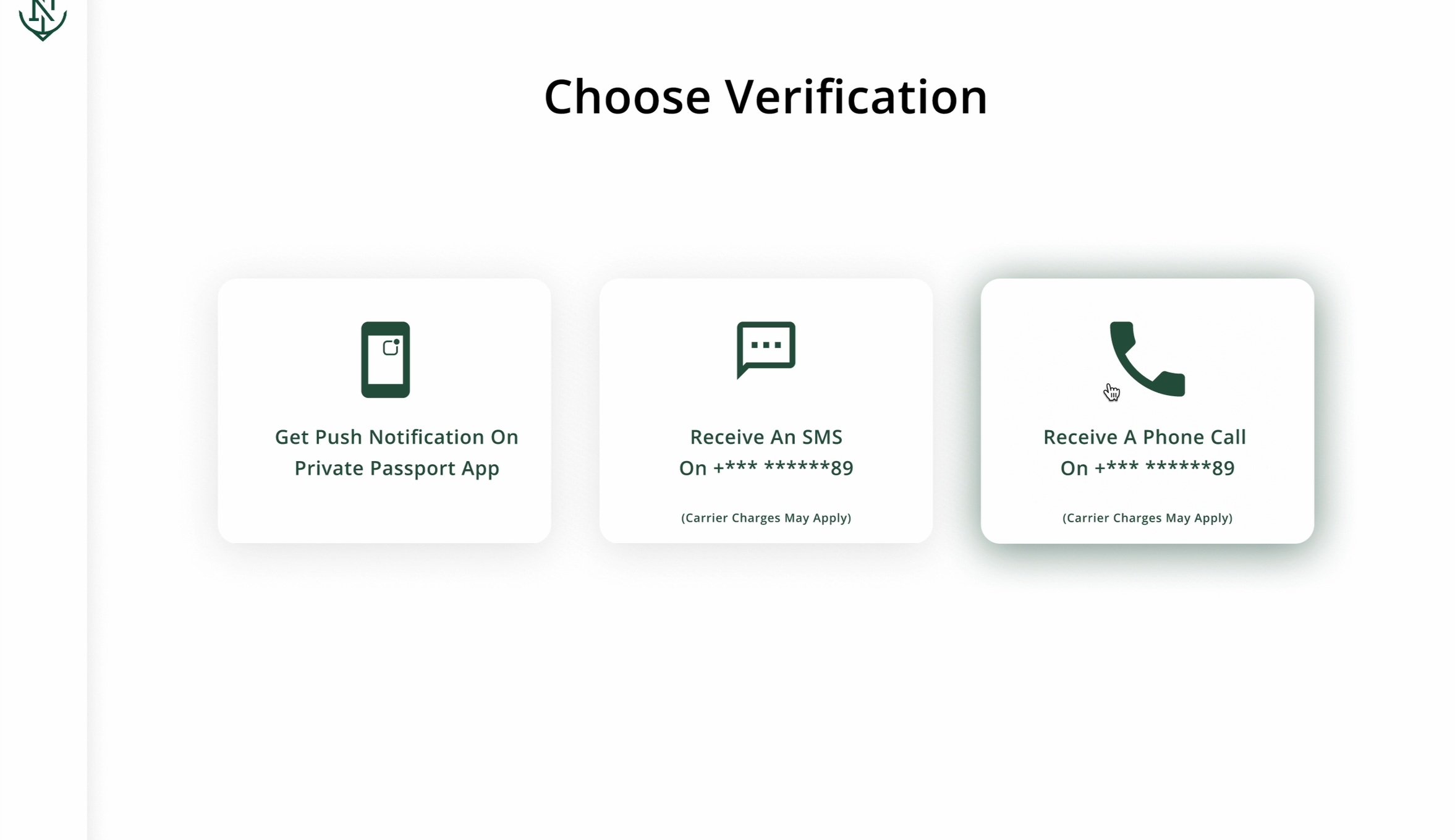Authentication - Northern Trust (IC + Managing 6 - Legacy Redesign)
Northern Trust – Private Passport Redesign
When Northern Trust set out to modernize its core authentication experience, the stakes were high: Private Passport is the front door to billions in client assets across wealth and institutional accounts. As Product Design Lead, I owned the end-to-end redesign of this enterprise-critical flow from audit and strategy to implementation and delivery while helping position design as a key enabler of trust and compliance.
The Strategic Challenge
The existing authentication flow had grown brittle technically outdated, inconsistent across channels, and friction-heavy for users. The brief was clear: create a responsive, secure login experience that reflects the sophistication of Northern Trust’s brand and meets modern UX expectations.
This wasn’t just a UX challenge it was a cross-functional leadership effort spanning engineering, compliance, and client services.
My Role
As Product Design Lead, I was accountable for both the design quality and strategic alignment of this initiative:
Strategic Discovery & Direction
Led a full audit of legacy flows, conducted competitor analysis, and facilitated workshops with stakeholders to define experience principles and success metrics.
Executive Stakeholder Engagement
Worked across business units and C-level sponsors to align on roadmap priorities, balancing risk, user impact, and platform scalability.
Product Ownership & Delivery Leadership
Shaped user stories, helped steer backlog prioritization, and guided cross-functional squads across sprints keeping teams focused, compliant, and user-driven.
Design System Leadership
Evolved our design language to support accessibility, reusability, and performance driving consistency across authentication, onboarding, and personalized dashboard flows.
Highlights & Outcomes
18% drop in post-launch support tickets, validating improved UX and error resilience.
15% increase in platform engagement post-launch, reflecting greater user confidence in login flows.
Created new cross-functional rituals and agile processes that improved delivery velocity and alignment across time zones.
A first implementation of an AI software design process in at Northern Trust
Why It Matters
Authentication is a moment of truth for security, trust, and the brand itself. Redesigning it required more than design skill: it demanded strategic foresight, cross-functional leadership, and the ability to bridge silos and systems with clarity and conviction.
During research we learned that the majority of private passport users were over 50 years of age, many with some form of vision impairment, or not as savvy with technology in general, we opted for large UI elements and explicit communication with both content, visuals and animation to best design for these users. Importantly this human-centred research led approach is now an exemplar case study for other teams in the bank.
This project reflects how I lead: combining vision with delivery, team coaching with hands-on execution, and a belief that design in financial services should never be an afterthought it should be a force multiplier.
